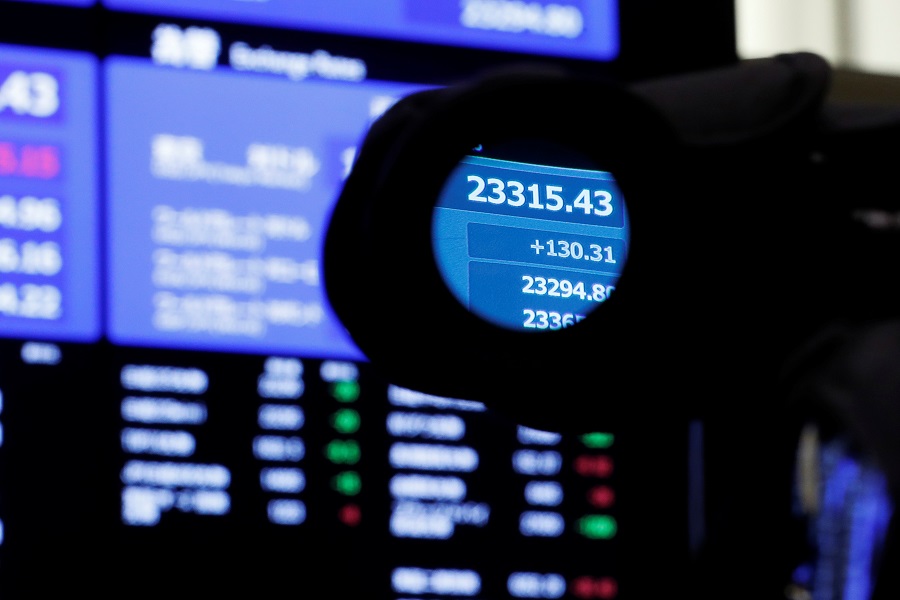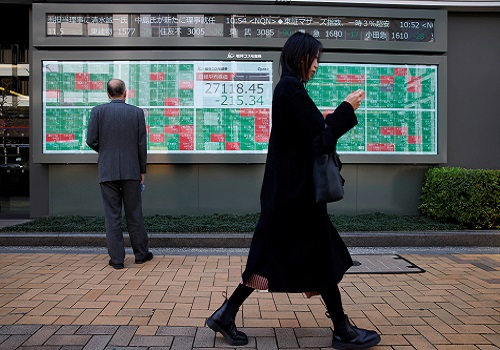Asian stocks sit tight, yen firms as BOJ beckons

Asian stocks clung to familiar ranges on Wednesday after contrasting results from tech bellwether Microsoft and chipmaker AMD suggested a divide in the AI landscape while the yen was firm ahead of the Bank of Japan's policy decision.
Central banks dominate investor attention on Wednesday, with the decision from the Federal Reserve also due later in the day with markets expecting the U.S. central bank to stand pat on rates but indicate rate cuts are on the way.
The BOJ on the other hand is expected to detail plans to taper its huge bond buying on Wednesday and debate whether to raise interest rates.
That along with escalating geopolitical tensions in the Middle East kept sentiment in check with the Israeli government claiming it killed Hezbollah's most senior commander in an air strike on Beirut on Tuesday. MSCI's broadest index of Asia-Pacific shares outside Japan was 0.23% higher but on course for a 1.2% decline for the month, snapping a five-month winning streak.
Investors remain jittery about the AI frenzy and tech valuations as results from tech bellwethers reinforced the idea that the payoff in hefty AI investments may take longer than first thought.
Disappointing earnings from Microsoft sent its shares along with other tech firms lower, while strong earnings from Advanced Micro Devices spurred a rally in chip stocks. Nasdaq futures rebounded and was last up 0.7%.
Japan's Nikkei fell 1% in early trading, on course for a 3.7% decline in July, weighed by the yen's ascent.
The yen was 0.20% higher at 152.465 per dollar, on course for a 5.5% gain in July, its strongest monthly performance since November 2022. The yen started July rooted near 38-year lows of 161.96 as the wide gap between interest rates in Japan and other developed nations weighed.
But a slew of factors including likely official intervention, a sell-off in equities and a reassessment of popular carry trades have helped the yen rebound to a 12-week high hit last week.
At the end of its two-day meeting, the BOJ will decide on a quantitative tightening plan that will likely halve monthly bond buying in 1-1/2 to two years' time - a pace roughly in line with dominant market forecasts.
But the focus will also be on whether the BOJ will raise rates, with several Japanese media reporting that the bank would consider raising rates, citing unidentified sources.
"I think the conundrum is that for the BOJ to signal it is serious about finally starting down the path of tighter monetary policy, just scaling back its bond buying programme is not enough," said Stuart Cole, chief economist at Equiti Capital.
Cole said the BOJ may announce plans not to buy as many bonds, but any bond buying is still further loosening monetary policy.
"If we get only a tepid scaling back in the bond purchase program and no rate hike, then it will just leave a big sense of disappointment and the yen will sell off again," he said.
FED PIVOT While the Fed is widely expected to hold interest rates, the spotlight is squarely on whether the central bank opens the door to a September cut.
Markets are fully pricing in a 25 basis point cut in September, with roughly 68 bps of easing priced in for the year.
The dollar index, which measures the U.S. currency against six rivals, was at 104.41 and is down 1.36% for July.
Some analysts though expect the Fed to remain cautious in the face of a still tight labour market.
In commodities, U.S. crude was 0.67% higher at $75.23 per barrel and Brent was at $79.02 per barrel, up 0.5% on the day. [O/R]
























